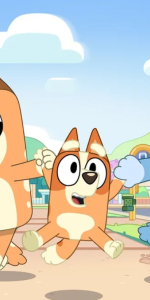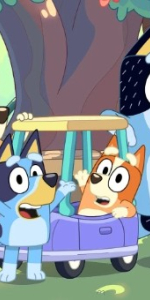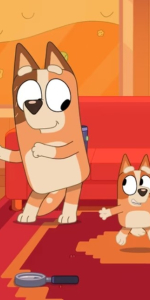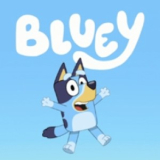


Unleashing the Charm of the Heeler Family
On the surface, Bluey may look like a typical children's show with its colorful palette and anthropomorphic characters, but delve a bit deeper and one uncovers a world rich with relatable family dynamics, genuine laughs, and tender-hearted stories that triumph in their simplicity. In the expansive realm of kids' television, where educational value often overrides entertainment, Bluey sets itself apart as a harmonious blend of both.
Set against the backdrop of suburban Brisbane, the series follows the adventures of an effervescent six-year-old Blue Heeler pup named Bluey, her spirited sister Bingo, their patient and imaginative mother Chilli, and the inexhaustibly playful father Bandit. With its seven-minute episodes, Bluey invokes the feeling of a cherished storybook, each chapter a self-contained vignette that promotes creative play as both a joyous activity and a developmental cornerstone for both children and parents alike.
A Dive into Bluey's Wholesome Universe with a Dash of Realism
Bluey's enchanting world is crafted with such finesse that it draws in viewers from across all age spectrums. The genius of its design lies not only in the relatable scripts but also in its acknowledgment of family life's complexities. We laugh with Bandit as he becomes an octopus in a game of tag, and we nod in understanding as Chilli juggles her work-life balance with grace. The animation is delightful, and the cultural representation is carefully curated to subtly introduce elements of Australian life to an international audience.
However, like any artistic endeavor, Bluey is not without its imperfections. The portrayal of Bandit as the almost-too-perfect father may inadvertently cast a shadow of inadequacy over real parents watching. Despite the show's attempts to occasionally address this, the bar set by Bandit's parenting could feel unattainable for some. Furthermore, the extended Heeler family and supporting characters sometimes remain underdeveloped, leaving viewers yearning for more holistic representations of community and diversity.
Another criticism might target the show's idealized portrayal of childhood itself. Bluey's world is predominantly conflict-free, and while this aligns with its target demographic's needs, it might sometimes omit the grittier, less harmonious aspects of growing up. In doing so, the opportunity for teaching resilience and problem-solving in more challenging scenarios slightly slips away.
Embracing Bluey’s Pawprints on Viewers' Hearts
For the legion of Bluey enthusiasts, the series is much more than a daily television ritual. It is a snugly woven tapestry of life lessons, laughter, and familial love that has resonated deeply with its audience. Perusing countless online forums and social media, one is struck by the outpouring of affection for Bluey, with many parents lauding the authentic representation of family life and the constructive depiction of parenting. The show has sparked discussions on child-rearing and the importance of play in development, making it a starting point for community conversations.
However, some viewers have expressed their reservations about Bluey, citing moments when the show's utopian depiction of family life felt quite distant from their own realities. Despite this, the sincere charm and universal values depicted in Bluey win over many hearts, creating a strong and dedicated fanbase that eagerly awaits each new adventure with the Heeler family.
In sum, Bluey stands as a testament to well-crafted children's programming, effortlessly bridging the gap between entertaining storytelling and educational substance. While it has its weak spots, just like any family, it welcomes viewers with open arms into its warm, animated embrace, where every heart is touched, and every imagination sparked, leaving an indelible pawprint on hearts worldwide.




















Leave a comment
Your comment is awaiting moderation. We save your draft here
0 Comments